Ford Focus vs Mercedes E Class – Which model is better for everyday use?
Compare performance, boot capacity, efficiency and price at a glance.
Find out which car is the better choice for you – Ford Focus or Mercedes E Class?
Costs and Efficiency:
Price and efficiency are often the first things buyers look at. Here it becomes clear which model has the long-term edge – whether at the pump, the plug, or in purchase price.
Ford Focus has a clearly advantage in terms of price – it starts at 27500 £, while the Mercedes E Class costs 50500 £. That’s a price difference of around 22976 £.
Fuel consumption also shows a difference: Mercedes E Class manages with 1.50 L and is therefore decisively more efficient than the Ford Focus with 4.90 L. The difference is about 3.40 L per 100 km.
Engine and Performance:
Power, torque and acceleration say a lot about how a car feels on the road. This is where you see which model delivers more driving dynamics.
When it comes to engine power, the Mercedes E Class has a decisively edge – offering 585 HP compared to 280 HP. That’s roughly 305 HP more horsepower.
In acceleration from 0 to 100 km/h, the Mercedes E Class is convincingly quicker – completing the sprint in 4 s, while the Ford Focus takes 5.70 s. That’s about 1.70 s faster.
There’s no difference in top speed – both reach 250 km/h.
There’s also a difference in torque: Mercedes E Class pulls significantly stronger with 750 Nm compared to 420 Nm. That’s about 330 Nm difference.
Space and Everyday Use:
Beyond pure performance, interior space and usability matter most in daily life. This is where you see which car is more practical and versatile.
Both vehicles offer seating for 5 people.
In curb weight, Ford Focus is noticeable lighter – 1330 kg compared to 1810 kg. The difference is around 480 kg.
In terms of boot space, the Mercedes E Class offers evident more room – 540 L compared to 392 L. That’s a difference of about 148 L.
When it comes to payload, Mercedes E Class to a small extent takes the win – 640 kg compared to 560 kg. That’s a difference of about 80 kg.
Who wins the race?
The Mercedes E Class proves to be wins the duel decisively and therefore becomes our DriveDuel Champion!
Mercedes E Class is the better all-rounder in this comparison.
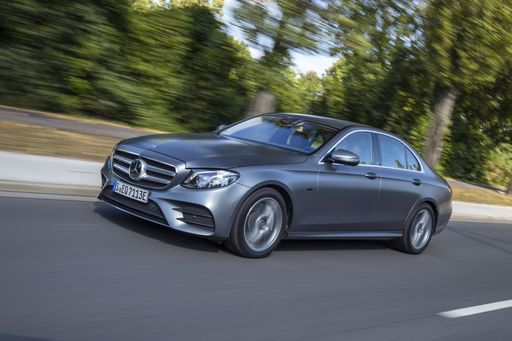 @ Mercedes-Benz Group Media
@ Mercedes-Benz Group Media
Mercedes E Class
Ford Focus
The Ford Focus is celebrated for its agile handling and stylish design, making it a popular choice among hatchback enthusiasts. Its well-crafted interior offers a comfortable driving experience with intuitive technology features. Whether navigating city streets or cruising on the motorway, the Ford Focus delivers a balanced drive with impressive efficiency.
details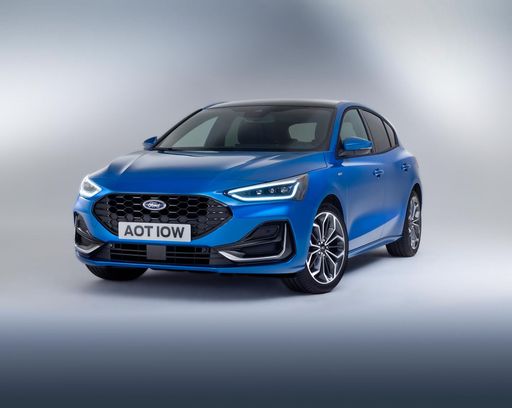 @ Ford Motor Company / Ford Media Center
@ Ford Motor Company / Ford Media Center
 @ Ford Motor Company / Ford Media Center
@ Ford Motor Company / Ford Media Center
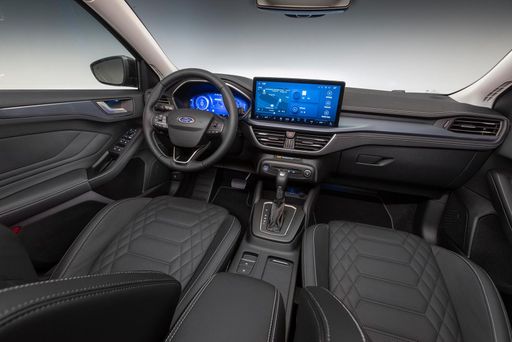 @ Ford Motor Company / Ford Media Center
@ Ford Motor Company / Ford Media Center
Mercedes E Class
The Mercedes-Benz E-Class Saloon epitomises sophistication and innovation, offering a seamless blend of elegant design and cutting-edge technology. Its refined interior ensures exceptional comfort, making every journey a luxurious experience. The driving dynamics are impressively balanced, providing both agility and smoothness, perfect for both city driving and long-distance cruising.
details @ Mercedes-Benz Group Media
@ Mercedes-Benz Group Media
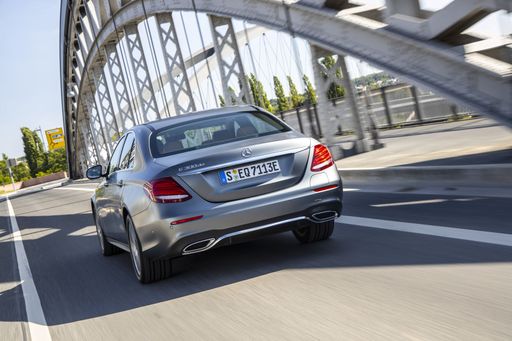 @ Mercedes-Benz Group Media
@ Mercedes-Benz Group Media
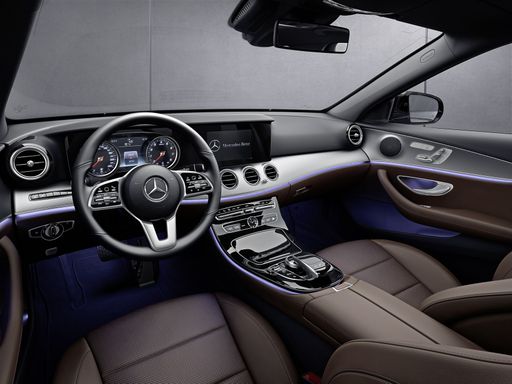 @ Mercedes-Benz Group Media
@ Mercedes-Benz Group Media
 @ Ford Motor Company / Ford Media Center
@ Ford Motor Company / Ford Media Center
|
 @ Mercedes-Benz Group Media
@ Mercedes-Benz Group Media
|
|
|
|
Costs and Consumption |
|
|---|---|
|
Price
27500 - 42700 £
|
Price
50500 - 119700 £
|
|
Consumption L/100km
4.9 - 8 L
|
Consumption L/100km
1.5 - 7.5 L
|
|
Consumption kWh/100km
-
|
Consumption kWh/100km
-
|
|
Electric Range
-
|
Electric Range
101 - 116 km
|
|
Battery Capacity
-
|
Battery Capacity
21.20 kWh
|
|
co2
117 - 183 g/km
|
co2
39 - 172 g/km
|
|
Fuel tank capacity
52 L
|
Fuel tank capacity
50 - 66 L
|
Dimensions and Body |
|
|---|---|
|
Body Type
Hatchback
|
Body Type
Sedan
|
|
Seats
5
|
Seats
5
|
|
Doors
5
|
Doors
4
|
|
Curb weight
1330 - 1529 kg
|
Curb weight
1810 - 2390 kg
|
|
Trunk capacity
392 L
|
Trunk capacity
370 - 540 L
|
|
Length
4382 - 4397 mm
|
Length
4949 - 4959 mm
|
|
Width
1825 - 1844 mm
|
Width
1880 mm
|
|
Height
1438 - 1482 mm
|
Height
1468 - 1480 mm
|
|
Max trunk capacity
1354 L
|
Max trunk capacity
-
|
|
Payload
495 - 560 kg
|
Payload
530 - 640 kg
|
Engine and Performance |
|
|---|---|
|
Engine Type
Petrol MHEV, Diesel, Petrol
|
Engine Type
Petrol MHEV, Plugin Hybrid, Diesel MHEV
|
|
Transmission
Manuel, Automatic
|
Transmission
Automatic
|
|
Transmission Detail
Manual Gearbox, Dual-Clutch Automatic, Automatic Gearbox
|
Transmission Detail
Automatic Gearbox
|
|
Drive Type
Front-Wheel Drive
|
Drive Type
Rear-Wheel Drive, All-Wheel Drive
|
|
Power HP
115 - 280 HP
|
Power HP
186 - 585 HP
|
|
Acceleration 0-100km/h
5.7 - 11.8 s
|
Acceleration 0-100km/h
4 - 8.5 s
|
|
Max Speed
186 - 250 km/h
|
Max Speed
222 - 250 km/h
|
|
Torque
170 - 420 Nm
|
Torque
320 - 750 Nm
|
|
Number of Cylinders
3 - 4
|
Number of Cylinders
4 - 6
|
|
Power kW
85 - 206 kW
|
Power kW
137 - 430 kW
|
|
Engine capacity
999 - 2261 cm3
|
Engine capacity
1993 - 2999 cm3
|
General |
|
|---|---|
|
Model Year
2022 - 2024
|
Model Year
2024 - 2025
|
|
CO2 Efficiency Class
D, G
|
CO2 Efficiency Class
E, F, B, D
|
|
Brand
Ford
|
Brand
Mercedes-Benz
|
What drive types are available for the Ford Focus?
Available configurations include Front-Wheel Drive.
The prices and data displayed are estimates based on German list prices and may vary by country. This information is not legally binding.
